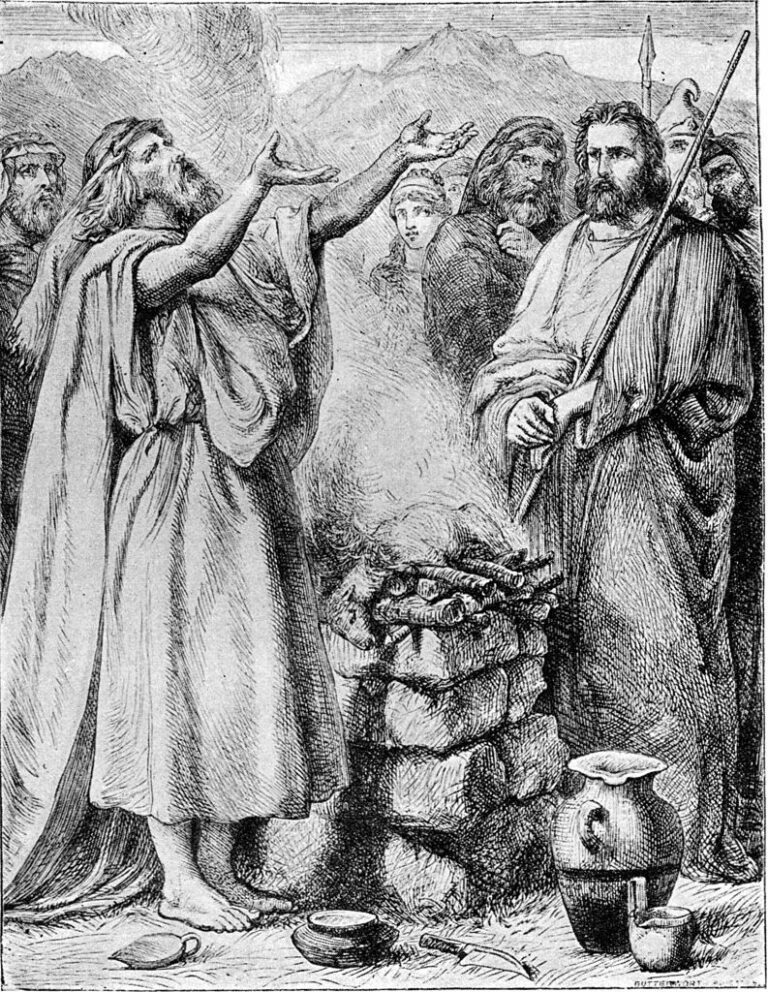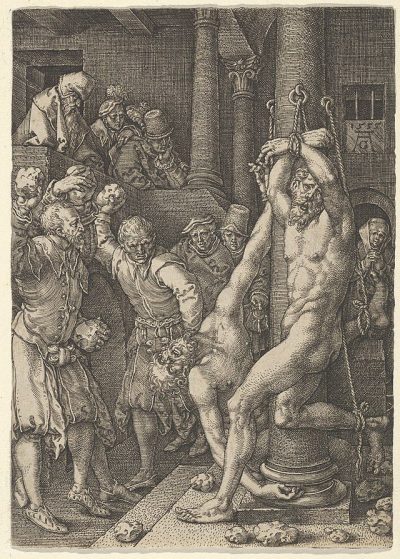Chapter 16.
Discover Jesus Without Dogma

In this chapter, I debunk the false dogmas superimposed by Christianity on the teachings of Jesus of Nazareth. I also introduce you to present-day people who have been channeling Jesus and his teachings in a direct and dogma-free form. The sections are as follows:
Note: Unless otherwise specified, all dates are CE (Common Era). The biblical scripture is from the New Revised Standard Version (NRSV). Of the scriptural verses quoted in this chapter, only three reflect what I believe align with Jesus’ teachings. I identify these verses when I quote them.
Did Jesus Exist?
The historical existence of Jesus is believed by virtually all scholars. According to the New Testament scholar Bart Ehrman, modern critical scholars of the Bible reject the opinion that Jesus did not exist. Ehrman points out, however, that the mythical Jesus is not the historical Jesus: the former is, for example, the Jesus of the stained-glass window or second-grade Sunday school class, while the latter is the historical person in Palestine. Ehrman emphatically states, “Jesus did exist, whether we like it or not,” excerpted from his book, Did Jesus Exist?
However, Jesus wasn’t the founder of the Christian religion. His life and teaching were not about religion. They were fundamentally about love, forgiveness, peace, healing, and the presence of God (Love) dwelling within each and every one of us.
Note: Jesus of Nazareth (Jeshua ben Joseph) is known to Christians as Jesus Christ or less commonly Christ Jesus. Christ is not part of his name, rather it is a title attributed to him in the New Testament.
Jesus Was the Son of Man
Jesus never claimed himself to be God. On the contrary, he claimed to be the “Son of man,” or he was referred to as the “Son of man,” no less than 80 times in the New Testament. Jesus embraced his humanity. For an explanation about how Jesus became God, see Creating a Religion by Making Jesus God in the “Introduction to Christianity” chapter. Further information on this topic can be found in the following interview with New Testament scholar Bart Ehrman regarding his recent book, How Jesus Became God: The Exaltation of a Jewish Preacher from Galilee: Fresh Air—If Jesus Never Called Himself God, How Did He Become One?.
Jesus did not “Die for Our Sins.”
There is convincing non-Biblical historical evidence that Jesus did not die for our sins. The Romans crucified Jesus for being an enemy of the state. Next to the Bible, the chief source for the history and antiquity of ancient Palestine is the work of Titus Flavius Josephus (37-ca. 100), a Roman citizen, who was a 1st century Romano-Jewish historian. Josephus, writing as a Roman for a Roman and Greek audience, wrote of the crucifixion of Jesus in his Antiquities of the Jews (ca. 94), “…and when Pilate, at the suggestion of the principal men among us, had condemned him to the cross… [italics added for emphasis].” This indicates that Pilate was acting on behalf of the Roman Empire.

Cornelius Tacitus, generally considered one of the greatest Roman historians, wrote in The Annals (ca. 116) about the crucifixion of Jesus, “Christus, from whom the name had its origin, suffered the extreme penalty during the reign of Tiberius at the hands of one of our procurators, Pontius Pilatus.” Scholars generally consider this reference to the execution of Jesus as genuine. The record shows that Jesus was crucified, yet there is little evidence as to why. However, scholars generally concur that the Romans considered Jesus a threat. Opinions by various experts include that he was found guilty of sedition, treason, or instigating rebellion against Rome.
There are incriminating reports of Pontius Pilates’ animosity toward the Jews. According to Elaine Pagels (in The Origin of Satan: How Christians Demonized Jews, Pagans, and Heretics), “Even Josephus, despite his Roman sympathies, says that the governor [Pontius Pilate] displayed contempt for his Jewish subjects, illegally appropriated funds from the Temple treasury, and brutally suppressed unruly crowds. Another contemporary observer, Philo, a respected and influential member of the Alexandrian Jewish community, describes Pilate as a man of ‘ruthless, stubborn and cruel disposition,’ famous for among other things, ordering ‘frequent executions without trial.’” Pagels continues, “The historian Mary Smallwood observes that rounding up and killing troublemakers was a routine measure for Roman forces stationed in Judea. During the 1th century, the Romans arrested and crucified thousands of Jews charged with sedition.”
Apostle Paul Invented the Belief that Jesus Died for Our Sins
Given the political nature of Jesus’ crucifixion, where did the idea that “Jesus died for our sins” originate? There is no evidence that Jesus said that he was going to die for our sins. This motivation was devised by the Apostle Paul, who never met Jesus of Nazareth. Most Christians learn that Paul was a zealous Jew who persecuted Christians soon after the death of Jesus. Paul claimed that he had experienced a vision of the ascended Jesus when he was traveling on the road to the city of Damascus to persecute more Christians. This vision led to his “conversion” to a zealous follower of Christ.
In around the year 55, the Apostle Paul wrote the following passage in a letter to the Corinthians:
…that Christ died for our sins in accordance with the scriptures, … (1 Corinthians 15:3)
This passage was eventually to become canonical scripture and a principal doctrine of the Roman Catholic Church; thus, Paul the Apostle may well be the most important founder of the Christian religion. However, despite Paul’s claim that this was “in accordance with the scriptures,” this passage is the only place in the Bible that asserts “that Christ died for our sins.” [italics added for emphasis.]
What prompted Paul to postulate “that Christ died for our sins?” As a Pharisaic Jew, Paul was well aware of early Judaism’s legalistic practices requiring blood sacrifice rituals. He used this “sacrifice” analogy to interpret Jesus’ crucifixion as an act of obedience to God to atone for the sins of humanity.
But what prompted Paul to postulate that humanity had some sin that required atonement? Paul relied on the story of Adam and Eve in the Hebrew book of Genesis to explain the origin of sin and death. The Adam and Eve story is a myth (see the Original Sin chapter). In his letter to Romans (Romans 5:12), Paul wrote, “Therefore, just as sin came into the world through one man [Adam], and death came through sin, and so death spread to all because all have sinned.”

However, in modern times, science has demonstrated that the biblical Adam and Eve never existed. Therefore, Adam’s sin never existed. This alone proves that Jesus didn’t die for our sins. Moreover, there is logical evidence that Paul’s theory doesn’t hold water. By virtue of the Christian dogma of the Trinity, Jesus is God. Since God is eternal, Jesus is eternal. The earthly body of Jesus “died”, but God-Jesus didn’t die, couldn’t die. How could there be a “sacrifice” of God’s “only begotten son”, when Jesus is God—who could never die?
How Credible Was Paul?
Since Paul’s theology of “Jesus died for your sins” is central to Christian doctrine, it is important to investigate Paul’s credibility. He had no God-given authority to speak; claiming to see an apparition didn’t qualify him to speak for God. Moreover, in his epistles, he contradicted himself. An example of this is his writing three separate, conflicting accounts of his “conversion” (in Acts 9:7, Acts 22:9, and Acts 26:12-18). This disparity casts doubt on Paul’s credibility. Paul’s credibility is in further doubt because he made promises of things that didn’t happen, particularly, the second coming of Christ (1 Thessalonians 4:16-17), which Paul was convinced would occur in his lifetime.

Early church leaders did not view Paul as an absolute authority, rather they were selective about which of his beliefs they embraced. Even though Paul’s “Christ died for our sins” theory was adopted by the Church as dogma, others were ignored. Paul did not believe in the immortality of the soul. In fact, he believed that people do not have souls. Bart Ehrman states, “As for Paul, there will indeed be a resurrection. It will be bodily. It will be a spiritual body, a perfect dwelling for life everlasting.” (Heaven and Hell)
In 1 Corinthians 15:9, Paul claims to be an apostle, though he never knew Jesus when Jesus was alive. Paul did not seem to know much about the life of Jesus as described by the Gospels, since he didn’t write about it. Also, there is no evidence that he even knew anything about Jesus’ teachings, since he didn’t write about those either. One may wonder if Paul was really interested in Jesus’ life, “From now on, therefore, we regard no one from a human point of view; even though we once knew Christ from a human point of view, we know him no longer in that way” (2 Corinthians 5:16).
Human Suffering Caused by the False Dogma that “Christ Died for Our Sins”
After Paul’s epistles were circulated, his “Christ died for our sins” dogma took hold. Early Christians began to consider Jesus to be the first Christian martyr (even though he wasn’t a Christian). Based on their misperception that he died for their sins, some early Christians were willing to die for their beliefs and become martyrs at the hands of the Romans, thereby, emulating Jesus’ persecution.
In accord with Paul’s belief that Jesus sacrificed his body, the Catholic Church developed a doctrine of mortification of the flesh, also based on Paul’s epistles. Paul wrote in Romans 8:13, “for if you live according to the flesh, you will die; but if by the Spirit you put to death the deeds of the body, you will live.” Therefore, the Church has considered mortification of the flesh (literally, “putting the flesh to death”) to be a worthy spiritual discipline.
Mortification was commonly practiced inside of monasteries, though it was not limited to monastics. Monasticism began to develop early in the history of the Church. Monastics typically lived cloistered and ascetic lives dedicated to Christian worship. Communities of virgins who had consecrated themselves to God are found at least as far back as the 2nd century.
Examples of mortification include self-flagellation and the wearing of a course cloth called sackcloth or stiff fabric called haircloth. Self-flagellation—the devotional or disciplinary practice of flogging oneself with whips or other instruments that inflict pain—has often been done as a penance or to share in the sufferings of Jesus, in hopes of bringing the flagellant’s focus to God. Sackcloth or haircloth, traditionally made with horse hairs, was used to make clothing designed to irritate the skin. This clothing was worn by people who were repenting for their sins or wrongdoings and were seeking forgiveness from God.

The doctrine of mortification persisted throughout the ages. Before becoming the father of the Protestant Reformation, Martin Luther (1483-1546) had been indoctrinated in mortification as a Catholic Augustinian monk (see the Kingpins of Christianity chapter). In the monastery he pushed his body to extreme measures of austerity. He sometimes slept without a blanket in freezing weather, flagellated himself, and fasted for three-day intervals. Luther lamented, “If I had kept on any longer, I should have killed myself with vigils, prayers, reading and other work.” Today, these kinds of activities are viewed as self-abuse and are recognized as psychologically damaging, so fortunately, the practice of mortification is now uncommon.
Nevertheless, Christians in contemporary society who believe that Jesus died for their sins can experience guilt and shame for erroneously thinking they are responsible for their savior’s death, which is also psychologically damaging. What kind of an organization would promote this belief? It seems to be the opposite of Jesus’ life of love and healing.
How Others Have Viewed Paul
The fact that Paul created his own brand of Christianity independent of Jesus’ teachings has been well known for centuries. Paul’s disregard for the life and teachings of Jesus has not escaped some of the most prominent theologians, Biblical scholars, and others:
- In the publication of his journals, The Journals, the eminent theologian Soren Kierkegaard stated:
In the teachings of Christ, religion is completely present tense: Jesus is the prototype and our task is to imitate him, become a disciple. But then through Paul came a basic alteration. Paul draws attention away from imitating Christ and fixes attention on the death of Christ The Atoner. What Martin Luther, in his reformation, failed to realize is that even before Catholicism, Christianity had become degenerate at the hands of Paul. Paul made Christianity the religion of Paul, not of Christ. Paul threw the Christianity of Christ away, completely turning it upside down, making it just the opposite of the original proclamation of Christ
- The winner of the 1952 Nobel Peace Prize, Albert Schweitzer—a physician, clergyman, missionary, and theologian—is called, “one of the greatest Christians of his time.” In his The Quest for the Historical Jesus and his Mysticism of Paul, Schweitzer stated:
Paul. … did not desire to know Christ. … Paul shows us with what complete indifference the earthly life of Jesus was regarded. …What is the significance for our faith and for our religious life, the fact that the Gospel of Paul is different from the Gospel of Jesus?. …The attitude which Paul himself takes up towards the Gospel of Jesus is that he does not repeat it in the words of Jesus, and does not appeal to its authority. …The fateful thing is that the Greek, the Catholic, and the Protestant theologies all contain the Gospel of Paul in a form which does not continue the Gospel of Jesus, but displaces it.
-
Thomas Jefferson, third president of the United States and author of the Declaration of Independence, stated in his “Letter to William Short” that “Paul was the first corrupter of the doctrines of Jesus.”
-
The winner of the 1925 Nobel Prize for Literature, George Bernard Shaw, wrote in his Androcles and the Lion, “There is not one word of Pauline Christianity in the characteristic utterances of Jesus. …There has really never been a more monstrous imposition perpetrated than the imposition of Paul’s soul upon the soul of Jesus.”
The Cross as a Misbegotten Christian Symbol
In 397 CE the Jesus-died-for-our-sins concept became official dogma of the Roman Catholic Church. The Church officially tied Jesus’ death to humanity’s purported sins. However, the extensive use of the cross as a symbol of Christianity had already arisen earlier in the 4th century. What a misleading symbol! How many Christians, when viewing the Christian cross or crucifix, experience unfounded guilt for believing that as a human they are partially responsible for his death? It is best to remember him as a teacher of love and wisdom rather than for his death on the cross.

Mediumship and Christianity
Mediumship has a long history. Pamela Rae Heath and John Klimo have combined over 200 years of published material on the afterlife from the great religious and spiritual teachings of the world, including mediumship and channeling. In their book Handbook to the Afterlife, they explain that “For at least 2,500 years, and across virtually all countries, cultures, and peoples, one can find thousands of stories and reports of individuals who claim, or have had claims made of them, that they are receiving messages from spirits who exist on some kind of level of reality other than our own here on physical earth.” Their book also includes information on apparitions.
Note: I estimate there are thousands of non-fiction books that have been written about communication with spirits. I feature a small fraction of these, which I have vetted, in the Mediumship, Near-Death Experiences, Out-of-Body Experiences, and Death and Dying resource pages.
Christians Have Been Forbidden to Seek Out Mediums—Why?
Perhaps the main reason why clerics forbid their followers to avoid mediums is that the act of communicating with a deceased spirit or soul disproves the doctrine of an eternity in heaven or hell. The souls of the deceased are free to communicate with their loved ones on Earth because deceased souls are not confined to a heaven or hell. Their communication can include information about the wide variety of experiences among deceased spirits that naysay Christian ideas of heaven and hell. Hence, departed souls who communicate with the living are labeled demons or the devil or other undesirable descriptions.
Some Christian clerics have drawn upon the Old Testament to justify forbidding consultation with mediums. This despite the fact that only three verses, all from the Book of Leviticus, discourage turning to mediums. The most widely quoted of these three verses is:
Do not turn to mediums or wizards; do not seek them out, to be defiled by them: I am the Lord your God. (Leviticus 19:31)
Christian clerics quote this ancient verse to try to prevent their followers from seeing mediums. Less often. they quote the second of the three verses:
If any turn to mediums and wizards, prostituting themselves to them, I will set my face against them, and will cut them off from the people. (Leviticus 20:6)
The last of these three verses is an example of clerics choosing inappropriate verses from the Bible to control their followers. I cannot imagine that any cleric would use it:
A man or a woman who is a medium or a wizard shall be put to death; they shall be stoned to death, their blood is upon them. (Leviticus 20:27)
These are but three of the 613 commandments in the Hebrew Bible and are the only ones that condemn mediumship.
As noted above, many Christian clerics are quick to quote Leviticus 19:31 to keep their followers from going to mediums, but how many of them quote Leviticus 20:27. Christian clerics don’t tell their followers to stone mediums to death, since it is morally wrong and also in direct conflict with the “Do not kill” commandment.
Verse 10 in this 20th chapter of Leviticus also commands killing:
If a man commits adultery with the wife of his neighbor, both the adulterer and the adulteress shall be put to death. (Leviticus 20:10)
What kind of a God would command such a thing?


The punishments recommended by these verses are contrary to the essence and teachings of Jesus. Obviously, it is not the God of love that is commanding violence and murder. But who was it, and why was this written? The Book of Leviticus is one of the five “Books of Moses” in the Torah of the Hebrew Bible, which, as I have discussed previously, became the part of the Christian Bible known as the Old Testament.
Leviticus was revised and greatly expanded about 2,500 years ago during the Babylonian exile by Judean priests to preserve and strengthen the Judean (Jewish) national identity. The instructions of Leviticus emphasize legal, ritualistic practices. These instructions were designed by Jewish religious writers to unite and control the Jewish population. In order to get their message across with authority, the Jewish authors knew that their own words wouldn’t be nearly as convincing as would words issuing from the mouth of God as a directive to the Jewish people. For more information, see the Hebrew Bible chapter.
These directives certainly weren’t written for people alive today. Still, in the 21st century, many in the Christian clergy are repeating these same words, implying authority when there is no authority whatsoever. However, like the ancient Judean priests who wanted their people to remain true to Judaism, Christian leaders quote the first two verses about mediums to bind their followers to their churches. To keep their followers away from mediums, some clerics use words like demons, sin, hell, Satan, or the devil when referring to mediums. Anyone who sincerely wonders whether the ancient biblical verses against mediums have any bearing on life in the 21th century should consider reading Leviticus in its entirety.
Jesus Was a Medium


According to scripture, Jesus himself was a medium:
Six days later, Jesus took with him Peter and James and his brother John and led them up a high mountain, by themselves. And he was transfigured before them, and his face shone like the sun, and his clothes became dazzling white. Suddenly there appeared to them Moses and Elijah, talking with him. Then Peter said to Jesus, “Lord, it is good for us to be here; if you wish, I will make three dwellings here, one for you, one for Moses, and one for Elijah.” (Matthew 17:1-4)
This verse unequivocally describes how the spirits of Moses and Elijah, who had died many hundreds of years before, appeared to Jesus. In communicating with the spirits of Moses and Elijah, Jesus was acting as a medium between the living and the dead. He gave his disciples proof that the spirits of the departed can communicate to people on Earth. Of course, clerics don’t point out this evidence of Jesus’ mediumship.
Recent Teachings from Jesus of Nazareth
Christians are taught that the life and teachings of Jesus contained in the four gospels are authoritative because they were written by two of the apostles, Matthew and John, and their companions, Luke and Mark. However, biblical scholars estimate the gospels were likely written between 70 CE and 110 CE—approximately forty to eighty years after Jesus died, so the vast majority of biblical scholars believe that these gospels could not have been written by the apostles and their companions. Rather, the gospels’ authors are anonymous, and none were eyewitnesses to Jesus’ life (for more information, see The Four Canonical Gospels: Matthew, Mark, Luke and John in the “New Testament” chapter).
Fortunately, the being known as Jesus of Nazareth is still healing and changing lives today in the 21th century. He is communicating with humanity through channeled communication in present-day speech that readers in English-speaking Western cultures can easily understand. Rather than having a church tell you what Jesus did and said and what you should believe according to the gospels, you can read his own words in the books that he has communicated in modern times through gifted, accurate mediums/channels.
When Jesus incarnated over 2,000 years ago, He came to teach humanity about love and forgiveness. His message is essentially the same today. A common denominator among all information channeled from Jesus is the nature of the messages. They are about love, forgiveness, peace, healing, and the presence of God (Love) within each and every person. How in the world could any Church or cleric in good conscience condemn their followers for receiving these messages?
A Clear and Direct Relationship Based on Authentic Teaching
My relationship with Jesus has gone through drastic changes through the years. As a young Christian, I worshipped him as my savior, who would help me get into heaven and stay out of hell if I obeyed the rules of my religion. Then, for several decades as an agnostic, I refused to believe he even existed. However, during my spiritual journey, I learned that Jesus really did come to earth to help humanity.
My spiritual quest began in 1984 and lead to my spiritual awakening in 2003. During my quest, I read extensively. Initially, I read mainly books based on Eastern mysticism, which I later learned was the source of some of the wisdom that Jesus received from the spiritual teachers he encountered. Eventually, in recent years, I discovered books that were channeled from Jesus in modern times. I consider his channeled books to be among the best sources of spiritual wisdom due to their fundamental truths, clarity, and comprehensiveness.
I was struck by Jesus’ profound wisdom and love for humanity. While reading his words, I discovered the truth of who he is eternally and who he was in his lifetime as Jesus. My heart opened up to him—not through worshipping him as my savior—but by loving him as a spiritual teacher. Through his channeled words, I developed a direct relationship with him based on love and wisdom that he continues to bring to humanity today.
If you would like to know the one known as Jesus, who came to earth two thousand years ago, consider reading his actual words as spoken through exemplary modern mediums/channels. Among the many books that Jesus has recently channeled through the people listed below, I suggest you start by reading one or both of following two books:
- Jesus: My Autobiography by Tina Louise Spaulding.
Jesus introduces this book, as follows:
I have come at this time, in this place, and through this being to speak my truth, to speak the story of my life – the true story of my life. — Jesus
- Cycles of the Soul: Life, Death, and Beyond by Gina Lake.
Jesus introduces this book, as follows:
This book is somewhat of a departure from what I, Jesus the Christ, have been writing and speaking about through this channel, but it seems important to flesh out more fully the larger context in which your human life unfolds. …you are not human at all but spiritual beings who have taken on a human life – indeed, many human lifetimes – for a relatively brief time in your soul’s existence as a means of exploration and spiritual advancement. — Jesus
Authors of Recent Books Channeled from Jesus (aka Jeshua)
Spaulding and Lake are but two of seven exemplary modern mediums/channels through whom Jesus has chosen to channel his teachings. Note that although Science-Based Awakening is featuring the works of these channels in this book, I receive no compensation from them.
Note: Many of Jesus’ channelings by other individuals appear in the form of articles that are not included here.
One may wonder why Jesus would choose to communicate through so many channels. Helane Wahbeh in her book The Science of Channeling provides an answer:
… a [channeled] communicator was asked why multiple channelers worldwide were channeling the same being, such as Jesus or Archangel Michael. The response was that the same message is distributed in as many ways as possible to make sure the message is received. Apparently, the channeler, message, listener, and communicator all have ‘frequencies’ that combine uniquely. Someone listening to channeler A with the same message may not really hear the message in the same way they would if they heard it from channeler B. This explains why you might hear the same messages over and over again in different ways.
These channels have authored a number of books containing Jesus’ channeled messages. They are listed here in alphabetical order:
- Judith Coates has been a channel for Jesus for over 25 years and has published many books from Jesus, as well as others. In some cases, she has channeled for groups of people who receive information that is specific to individuals in the groups. She lives in Washington State.
Website: oakbridgeuniversity.org
- Glenda Green is an artist and author. Jesus has appeared to her, which led to several paintings of him and two books describing her experience and his teachings. She has taught art history at Tulane University and the University of Oklahoma. She is a leading portrait painter and realist; 20% of her work is now owned by museums such as the Louvre, Prado and the British Museum. She now lives in Texas.
Website: wayoflife.love
- Mercedes Kirkel is a spiritual teacher and multi-award-winning author. She channels Mary Magdalene as well as Jesus. Mercedes lives in New Mexico.
Website: www.mercedeskirkel.com
- Pamela Kribbe holds a doctorate in philosophy. She channeled The Jeshua Channelings (2008), which has been translated into seventeen languages. Pamela lives in the Netherlands.
Website: www.lightraisersworldwide.com
- Gina Lake has a master’s degree in counseling psychology and has channeled over a dozen recent books from Jesus. She lives in Arizona.
Website: radicalhappiness.com
- Helen Schucman was a professor of medical psychology at Columbia University. In 1976, She channeled A Course in Miracles (ACIM), which has been translated into twenty-seven languages. This is the earliest channeled material among the six mediums that are presented here.
- Tina Louise Spaulding has channeled several books from Jesus. She had spent many years studying The Course of Miracles before she began channeling him. She lives in British Columbia, Canada.
Website: ChannelingJesus.com
Although some of the words in the Bible that Jesus purportedly spoke were created by people who never knew him, many biblical passages do reflect what he actually spoke. In some of his channeled books, especially the ones channeled by Gina Lake, Jesus talks about the biblical passages that he actually spoke and explains their meaning.
A Note About the Course in Miracles (ACIM)
The Course consists of three sections: the Text, Workbook for Students, and Manual for Teachers. Millions of copies have been sold. The A Course in Miracles Text contains 365 readings that are intended to be read once a day over a full year. Often, a person who is studying the course participates in a regularly scheduled study group facilitated by a course teacher.
Some people find the structure of the text difficult to read and comprehend. Several alternatives are now available for those people. The most widely used of these are:
- Journey Through the Workbook of a Course in Miracles (2005, 2011). This is a 7-volume analysis and foundation for ACIM written by Kenneth Wapnick, Ph.D., the original ACIM editor.
- A Year of Forgiveness: A Course in Miracles: Lessons with Commentary from Jesus (2020) channeled by Tina Louise Spaulding.





